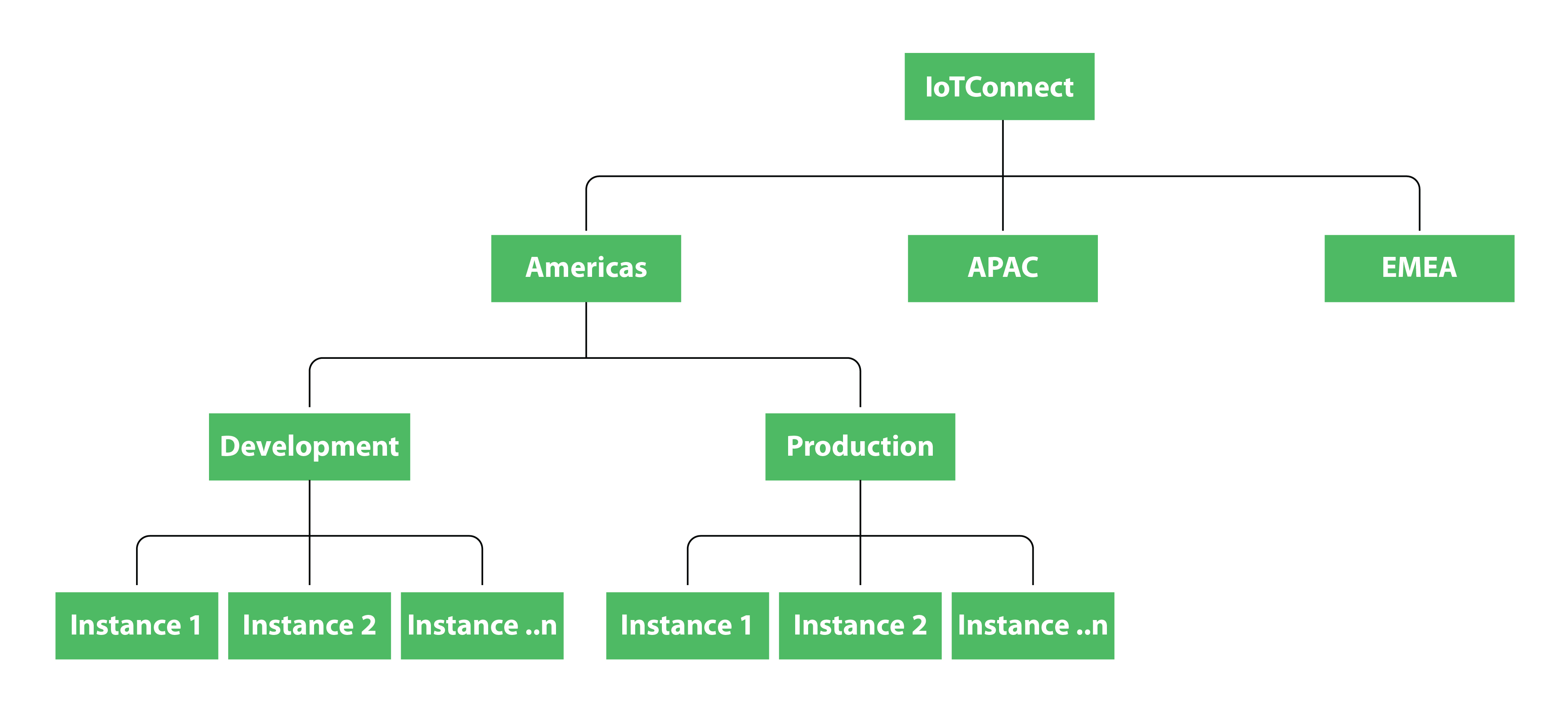Instance And Environment
Avnet’s /IOTCONNECT™ platform allows for device communication and management, data storage, app creation and enablement, robust security protocols. By using this platform, you can build your IoT solutions easily and allow your customers to streamline and synchronize their connected devices to generate the insights a business needs to get the desired output.
However, before you start building your IoT solutions, you must have a running instance of our /IOTCONNECT™ platform.
Instance
So, let’s understand, what an instance is, and why you need it. If you go by the simple definition in terms of programming language, an instance is a concrete occurrence of something during run time.
Similarly, in our case, an instance is a thread or running copy of /IOTCONNECT™ on the cloud. We have created multiple instances of /IOTCONNECT™ and spread them out geographically in three different availability zones namely Americas, APAC and EMEA. We have further classified our /IOTCONNECT™ instances into two types i.e. development and production. Development instance is where IoT solutions can be built, tested and modified, while the production instance is the one in which IoT solutions can be made available to end-users.

To get started, users are provided with a few default instance(s), based on the details filled and plan selected during the onboarding process. You can check these instances and their details in the My Instance section of the partner portal. In case you need more instances, you can buy them as well.
Now let’s figure out why you need to have a running instance of /IOTCONNECT™. You need an instance to create an /IOTCONNECT™ environment for your product on the top of which IoT solution can be built and deployed. Several IoT products can share the same instance to create different environments for their products.
Now as we know, an instance is needed to build an environment for your IoT product. Let’s know about an environment in detail.
Environment
An environment is nothing but an instance that is linked to a specific product. Unlike an instance that can be associated with more than one product, the environment is product specific. This means two products can never share the same environment. However, one product can have one or more environments.
As already discussed above, the instances can either be of development type or production type, so based on the instance selection, any environment can either be a development environment or a production environment. You can create a development environment when you want to build your IoT solution and test it. And once your solution is ready, you can create a production environment and move your IoT solution into it for customers to use.
Creating an environment
Once you define the product, you create an environment for it. For this, you need to give your environment a name, select the region and type, choose from the available instances that you have and enter other necessary details.

Once you create the environment, you get access to various /IOTCONNECT™ APIs using which you can create a solution template for your product.
To know more about creating an environment in detail, you can go through our user guide.
Next step> Understanding our Subscription module.